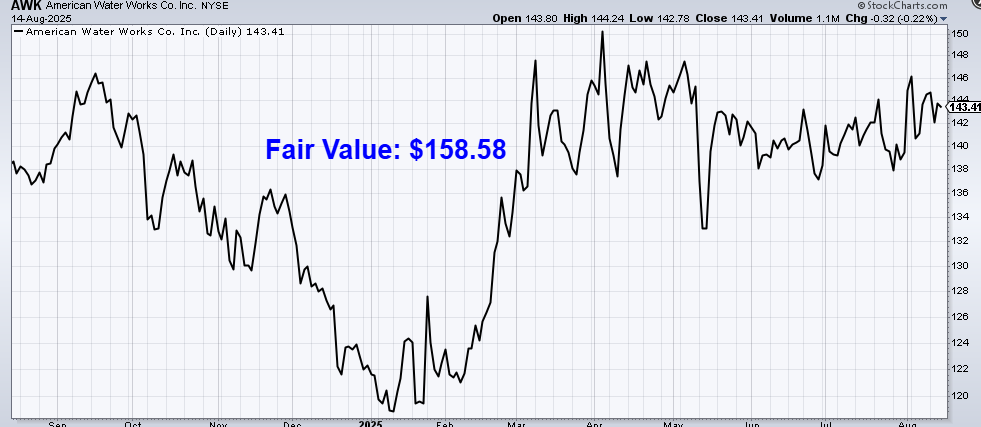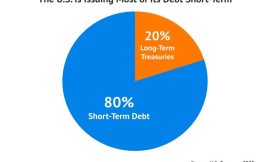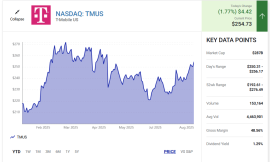There’s so much in the world that we can’t control.
I’d argue that most of life is out of an individual’s control.
And that’s why it’s so important to double down and really focus on what we can control.
Well, your finances are, to a large degree, within your control.
You have some control over how much you spend, save, and invest, as well as how you invest.
To that last point, you can choose from all kinds of investment tactics and strategies.
But the best strategy of all might just be dividend growth investing.
This is a long-term investment strategy revolving around the idea of buying and holding shares in world-class businesses paying out safe, growing cash dividends.
These businesses are so successful and profitable, they’re able to generate gobs of excess cash flow that can be returned back to shareholders.
And this safe, growing dividend income can be used for all kinds of things in life, including unlocking financial freedom by getting the bills paid without needing to work.
You can find hundreds of stocks that qualify for the strategy by perusing the Dividend Champions, Contenders, and Challengers list.
This list of US-listed stocks which have raised dividends each year for at least the last five consecutive years is a treasure trove for dividend growth investors.
I’ve frequently referred to this list as I’ve gone about building the FIRE Fund over the last 15 years.
That’s my real-money portfolio, and it sends me enough five-figure passive dividend income to live off of.
I’m thankful to say that I’ve been able to live off of this dividend income since I quit my job and retired in my early 30s.
How exactly I was able to accomplish that is laid out in my Early Retirement Blueprint.
Now, another thing within your control is the valuation you’re willing to accept and pay when making an investment.
After all, price is only what you pay, but it’s value that you ultimately get.
An undervalued dividend growth stock should provide a higher yield, greater long-term total return potential, and reduced risk.
This is relative to what the same stock might otherwise provide if it were fairly valued or overvalued.
Price and yield are inversely correlated. All else equal, a lower price will result in a higher yield.
That higher yield correlates to greater long-term total return potential.
This is because total return is simply the total income earned from an investment – capital gain plus investment income – over a period of time.
Prospective investment income is boosted by the higher yield.
But capital gain is also given a possible boost via the “upside” between a lower price paid and higher estimated intrinsic value.
And that’s on top of whatever capital gain would ordinarily come about as a quality company naturally becomes worth more over time.
These dynamics should reduce risk.
Undervaluation introduces a margin of safety.
This is a “buffer” that protects the investor against unforeseen issues that could detrimentally lessen a company’s fair value.
It’s protection against the possible downside.
Focusing on what you can control by routinely buying undervalued high-quality dividend growth stocks can unlock an incredible life built upon the foundation of financial freedom.
Of course, knowing whether or not a stock could be undervalued requires one to already have a basic understanding of valuation in place.
That’s where Lesson 11: Valuation comes in.
Written by fellow contributor Dave Van Knapp, it discusses valuation using simple terminology and even provides a valuation template you can use all on your own.
With all of this in mind, let’s take a look at a high-quality dividend growth stock that appears to be undervalued right now…
American Water Works Company Inc. (AWK)
American Water Works Company Inc. (AWK) is a utility company that provides water and wastewater services in the United States.
Founded in 1886, American Water Works is now a $28 billion (by market cap) major water utility that employs nearly 7,000 people.
American Water Works provides water and wastewater services to roughly 14 million people across 14 different states.
By customers, this is the largest publicly-traded water and wastewater utility in the US.
The company’s main segment is Regulated Businesses, which accounted for 92% of FY 2024 revenue and comprises the core water and wastewater utility operations.
A small component of the company (8% of FY 2024 revenue) is unregulated, serving 18 different military installations with water and wastewater services backed by very long-term (usually 50 years) contracts.
American Water Works is, at its heart, a regulated water and wastewater utility business that primarily serves residential and commercial customers.
It’s a simple proposition.
But the simplicity of the business model is where the beauty is.
After all, we literally cannot live without water.
And indoor plumbing with running water is a prime component of that consideration.
American Water Works has been providing something its customers cannot live without since the late 1800s.
We’re talking almost 150 years here.
And I see no reason why it won’t continue to do this for another 150 years.
That kind of long-term visibility into the viability of the business model and its ability to generate revenue is incredibly rare, making it a very compelling investment for those who think and invest in terms of decades.
They say death and taxes are the only certainties in life, but I think humanity’s thirst (pun intended) for water is pretty close to a third certainty.
Water is our most precious resource, necessary for sustaining life.
The company’s customer base is about as captive as it gets.
Better yet, despite the absolute necessity for what American Water Works provides, the company estimates that its monthly water bill to its customers amounts to less than 1% median household income, making it an affordable, no-brainer decision to continue paying the company and keep the pipes flowing.
This affordability for a life-sustaining resources, along with the goodwill the affordability engenders, is underpinned by heavy regulation, as regulators put a lid on what the company can charge for its services.
Without regulation, it would be easy to charge very high prices for something people must buy.
A combination of survival-enforced necessity and government-enforced affordability puts American Water Works in a position to continue growing its revenue, profit, and dividend for decades (if not centuries) to come.
Dividend Growth, Growth Rate, Payout Ratio and Yield
Already, the company has increased its dividend for 18 consecutive years.
The 10-year dividend growth rate of 9.5% is impressive not just in terms of its figure but also its consistency.
Year after year, American Water Works increases its dividend by a high-single-digit rate (usually ranging between 8%+ and 9%+).
It’s clockwork.
This consistency is predicated on the reliability of demand for what it offers.
This is as close as it gets to a “sleep-well-at-night” investment.
Seeing as how inflation is nowhere near 9%, shareholders are continually seeing their purchasing power rise.
It’s awesome.
And you’re able to layer that dividend growth on top of the stock’s starting yield of 2.3%.
That’s a very nice yield when balanced against the HSD dividend growth.
This yield is 10 basis points higher than its own five-year average, which is a decent spread, but it’s well ahead of what the broader market offers in terms of yield.
Backing the dividend is a reasonable payout ratio of 59.6%, showing plenty of ongoing dividend sustainability (further backed by the reliable nature of the business model itself).
Nobody would mind seeing a higher yield, but this is a fantastic dividend profile here.
Revenue and Earnings Growth
As fantastic as it may be, though, this profile is largely based on numbers from the past.
However, investors must always be looking out toward the future, as the capital of today is risked for the rewards of tomorrow.
Thus, I’ll now build out a forward-looking growth trajectory for the business, which will come in handy during the valuation process.
I’ll first show you what the business has done over the last decade in terms of its top-line and bottom-line growth.
And I’ll then reveal a professional prognostication for near-term profit growth.
Blending the proven past with a future forecast in this manner should give us enough information to roughly gauge where the business could be going from here.
American Water Works advanced its revenue from $3.2 billion in FY 2015 to $4.7 billion in FY 2024.
That’s a compound annual growth rate of 4.4%.
Good stuff.
I usually look for a mid-single-digit top-line growth rate out of a mature business, and American Water Works delivered.
The company’s earnings per share increased from $2.64 to $5.39 over this period, which is a CAGR of 8.3%.
That’s a solid bottom-line growth rate for any company, but it’s especially strong for a utility.
Utilities are typically slow-growth businesses further constrained on EPS growth by steady dilution (because growth is often funded by a combination of debt and equity).
American Water Works definitely bucks the trend, and we can also see how well dividend and EPS growth line up.
I’ll note that American Water Works is a serial acquirer, consistently acquiring small water and wastewater operations in order to expand its network and customer base.
This offers a nice growth kicker, and I see it as an advantage relative to power utilities which are often limited to a specific geographic area.
Looking forward, CFRA is forecasting that American Water Works will compound its EPS at a 7% annual rate over the next three years.
Growth will be underpinned by CapEx, as utilities are guaranteed a rate of return on spending/investments by regulators.
I spoke earlier on how regulation acts as a ceiling on the business, limiting the rates that a utility can charge, but because of how the regulatory framework guarantees a reasonable rate of return on spending/investments, regulation is almost equally a floor underneath the business.
American Water Works will continue to maintain and expand its network, spending in the process and earning a rate of return.
While a 7% CAGR is nothing to wag one’s finger at, particularly when talking about a utility, this could be construed as a pessimistic take.
It’s lower than what American Water Works made good on over the last decade.
Furthermore, American Water Works is guiding for 7% to 9% long-term EPS and dividend growth – guidance that gets constantly backed and reiterated from management.
This guidance is partially based on the growth potential out of the existing business model (via CapEx).
Adding in the acquisitions on top of that (which is something that many utilities cannot take advantage of) juices things further, which is just one more reason why American Water Works is one of the more compelling utilities I know of.
Seeing as how the company is putting out growth exceeding CFRA’s 7% forecast, which would be on the low end of the company’s long-term guidance anyway, I’d be inclined to split the difference and assume something right up the middle.
That puts us at 8% EPS and dividend growth.
And that’s on top of the 2%+ starting yield, making for an easy path toward a 10%+ annualized total return.
The stock’s 10-year CAGR (including reinvested dividends) is right about 12.5%, so that gives you an idea of what’s possible here.
Considering how that’s coming out of a relatively low-risk water utility, it’s an awfully attractive long-term setup.
Financial Position
Moving over to the balance sheet, American Water Works has a fair standard (for a utility) financial position.
The long-term debt/equity ratio is 1.2, while the interest coverage ratio is just under 4.
In absolute terms, these are not great numbers.
However, relative to almost any utility out there, these are right about in line for the industry.
We have to keep in mind that we’re dealing with a water utility here.
American Water Works has almost no risk of obsolescence or insolvency.
It can’t not be in business.
The pure necessity of the business model and what it provides explains the investment-grade credit ratings for its senior unsecured debt: A, S&P Global; Baa1, Moody’s.
Profitability is respectable.
Again, this is a utility.
Return on equity averaged 12.4% over the last five years, while net margin averaged 23.4%.
ROE gets juiced by the debt, but the margin expansion story (it was closer to 15% a decade ago) is noteworthy.
This business, at its core, almost can’t lose over time, and it has multiple powerful growth levers to pull over the coming years: upgrading aging infrastructure, slowly increasing fees, and adding inorganic growth through acquisitions.
And with economies of scale, local monopolies across service territories, high barriers to entry, regulatory support for profit recovery, and entrenched infrastructure, the company does benefit from durable competitive advantages.
Of course, there are risks to consider.
Litigation, regulation, and competition are omnipresent risks in every industry.
There is essentially no competition across local territories, giving American Water Works a rare leg up on a lot of other business models that have competition.
Regulation is both a headwind and a tailwind: The regulatory framework puts a ceiling on profit (in order to prevent gouging), but the framework also puts a profit floor under the business by allowing a recouping of investments through incremental increases in service fees to customers.
The company’s acquisitive nature requires introduces risks regarding capital allocation, execution, and integration.
Accessing source water, due to natural changes, may become increasingly challenging and difficult for the company over time.
In comparison to the typical business, I see few risks here.
And the low-risk, reliable nature of the business model doesn’t appear to be fully reflected in the valuation…
Valuation
The stock is available for a P/E ratio of 25.6.
That P/E ratio is quite a bit lower than its five-year average of 28.5.
This stock often commands a healthy premium, and deservedly so (in my view), but that premium has recently mostly evaporated.
The cash flow multiple of 13.1, which is very reasonable, is also far below its own five-year average of 16.9.
And the yield, as noted earlier, is slightly higher than its own recent historical average.
So the stock looks cheap when looking at basic valuation metrics. But how cheap might it be? What would a rational estimate of intrinsic value look like?
I valued shares using a dividend discount model analysis.
I factored in a 10% discount rate and a long-term dividend growth rate of 8%.
I’m splitting the difference on the 7% to 9% long-term EPS and dividend growth guidance from American Water Works.
It’s a down-the-middle approach that I think is prudent.
We can see that American Water Works has been growing both its EPS and dividend at 8%+ rates, respectively, over the last decade, and I just see nothing to indicate any material changes on the horizon.
This kind of growth is atypical for a utility, but the company’s acquisitive nature is also atypical.
In my view, getting 8% growth out of a water utility with some of the best reliability in the world is terrific.
The DDM analysis gives me a fair value of $178.74.
The reason I use a dividend discount model analysis is because a business is ultimately equal to the sum of all the future cash flow it can provide.
The DDM analysis is a tailored version of the discounted cash flow model analysis, as it simply substitutes dividends and dividend growth for cash flow and growth.
It then discounts those future dividends back to the present day, to account for the time value of money since a dollar tomorrow is not worth the same amount as a dollar today.
I find it to be a fairly accurate way to value dividend growth stocks.
I view this as an above-average utility at a below-average (relative to itself) valuation.
But we’ll now compare that valuation with where two professional stock analysis firms have come out at.
This adds balance, depth, and perspective to our conclusion.
Morningstar, a leading and well-respected stock analysis firm, rates stocks on a 5-star system.
1 star would mean a stock is substantially overvalued; 5 stars would mean a stock is substantially undervalued. 3 stars would indicate roughly fair value.
Morningstar rates AWK as a 3-star stock, with a fair value estimate of $137.00.
CFRA is another professional analysis firm, and I like to compare my valuation opinion to theirs to see if I’m out of line.
They similarly rate stocks on a 1-5 star scale, with 1 star meaning a stock is a strong sell and 5 stars meaning a stock is a strong buy. 3 stars is a hold.
CFRA rates AWK as a 3-star “HOLD”, with a 12-month target price of $160.00.
I came out high, even though I think my valuation model was quite sensible and is roughly corroborated by the gaps in multiples. Averaging the three numbers out gives us a final valuation of $158.58, which would indicate the stock is possibly 10% undervalued.
Bottom line: American Water Works Co Inc. (AWK) is a terrific utility providing its customers with the world’s most precious resource – a resource human beings literally cannot live without. This business almost can’t lose over the long run. With a market-beating yield, high-single-digit dividend growth, a reasonable payout ratio, nearly 20 consecutive years of dividend increases, and the potential that shares are 10% undervalued, this is a sleep-well-at-night investment for long-term dividend growth investors who prioritize reliability over the course of decades.
-Jason Fieber
P.S. If you’d like access to my entire six-figure dividend growth stock portfolio, as well as stock trades I make with my own money, I’ve made all of that available exclusively through Patreon.
Note from D&I: How safe is AWK’s dividend? We ran the stock through Simply Safe Dividends, and as we go to press, its Dividend Safety Score is 70. Dividend Safety Scores range from 0 to 100. A score of 50 is average, 75 or higher is excellent, and 25 or lower is weak. With this in mind, AWK’s dividend appears Safe with an unlikely risk of being cut. Learn more about Dividend Safety Scores here.
Disclosure: I’m long AWK.




